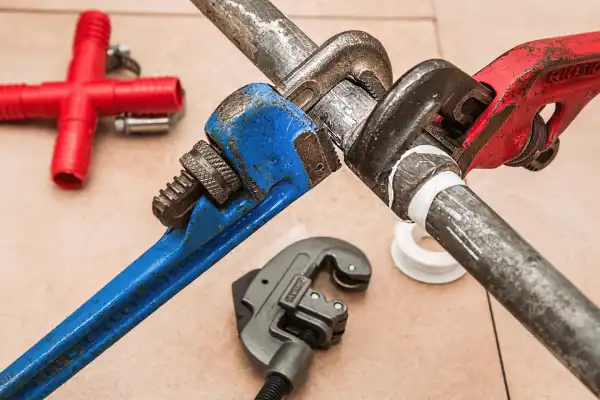This article is provided by Bellows to give you advice on your plumbing.
As the chill of winter sets in, it’s essential to prepare your home’s plumbing system to prevent the inconvenience and cost of burst pipes and other related issues. Winterizing your plumbing is a key aspect of home maintenance, especially in areas where temperatures drop significantly. From insulating pipes to checking your heating system, each step you take can help protect your home against the harsh winter elements. It’s about being proactive to avoid the stress and expense of emergency repairs during the coldest months.

In this article, we’ll go through essential tips for winterizing your plumbing and ensuring your home is ready to face the winter season. These straightforward yet effective measures can safeguard your plumbing system, giving you peace of mind and a trouble-free winter.
- Insulate Your Pipes
One of the most critical steps in winterizing your plumbing is insulating your pipes, especially those in unheated areas like basements, attics, and garages. Pipe insulation can prevent water inside the pipes from freezing, which is a leading cause of pipe bursts. Foam pipe insulation is relatively inexpensive and easy to install, making it a practical first step in your winterizing process.
- Service Your Heating System
Maintaining your home’s heating system is crucial for winter plumbing protection. A well-functioning heating system helps keep your home and its pipes warm. Consider searching online with the keyword Heat pump maintenance near me to find professional services, such as Bellows Plumbing, Heating & Air, that can inspect and service your heating system, ensuring it operates efficiently throughout the winter.
- Winterize pipes including Outdoor Pipes and Hoses
Before the first freeze, ensure all outdoor hoses are disconnected, drained, and stored away. Shut off the water supply to outdoor faucets and drain them to prevent any remaining water from freezing and expanding, which could cause pipes to burst. For homes with sprinkler systems, follow the manufacturer’s instructions to properly drain and winterize the system.
- Check for Leaks and Cracks
Inspect your home for any leaks or cracks that could let cold air in, particularly in areas where plumbing pipes are located. Even small leaks can cause significant problems in winter as they allow cold air to reach your pipes. Sealing these leaks with caulking or insulation can help keep your pipes warm and reduce the risk of freezing.
- Keep the Heat On
If you plan to be away from home during the winter, it’s important to winterize your pipes, keep the heat on to prevent them from freezing. Set your thermostat to a temperature no lower than 55 degrees Fahrenheit. This measure is especially crucial in homes with plumbing in exterior walls, which are more susceptible to freezing.
- Open Cabinet Doors
During particularly cold spells, open cabinet doors under sinks to allow warm air to circulate the plumbing. This is especially important for pipes in exterior walls or unheated areas of the home. The increased air circulation can prevent water within these pipes from freezing.
- Seal and Insulate Your Home
Proper insulation and sealing of your home can make a significant difference in maintaining a consistent temperature and protecting your plumbing. Ensure that your attic, basement, and crawl spaces are well-insulated. Check around windows and doors for drafts and add weatherstripping where necessary.
- Let Faucets Drip
On extremely cold nights, allow faucets to drip slightly. The movement of water, even a small trickle, can prevent pipes from freezing. Focus on faucets that are fed by pipes running through unheated or exposed areas.
- Know Your Home’s Plumbing Layout
Familiarize yourself with the layout of your home’s plumbing. Knowing where the main water shut-off valve is located can be crucial in an emergency. If a pipe does burst, shutting off the water quickly can minimize damage.
- Consider Installing a Water Leak Detection System
A water leak detection system can be a worthwhile investment, especially if you travel frequently in the winter. These systems can alert you to leaks and changes in temperature, allowing you to address issues promptly before they lead to serious damage.
- Flush Your Water Heater
Flushing your water heater can help remove sediment build-up, which can reduce the efficiency of your heater and increase your energy costs. This is particularly important in the winter when your hot water heater works harder to provide warm water.
Conclusion
Winterizing your plumbing is a proactive approach to protect your home during the cold months. By following these essential tips, you can minimize the risk of frozen pipes and the associated damages, ensuring your plumbing system remains functional and efficient throughout the season. Regular maintenance, timely repairs, and a bit of preparation can go a long way in safeguarding your home against the challenges of winter. Stay warm and secure in your well-maintained home, and enjoy the winter season without plumbing worries.
